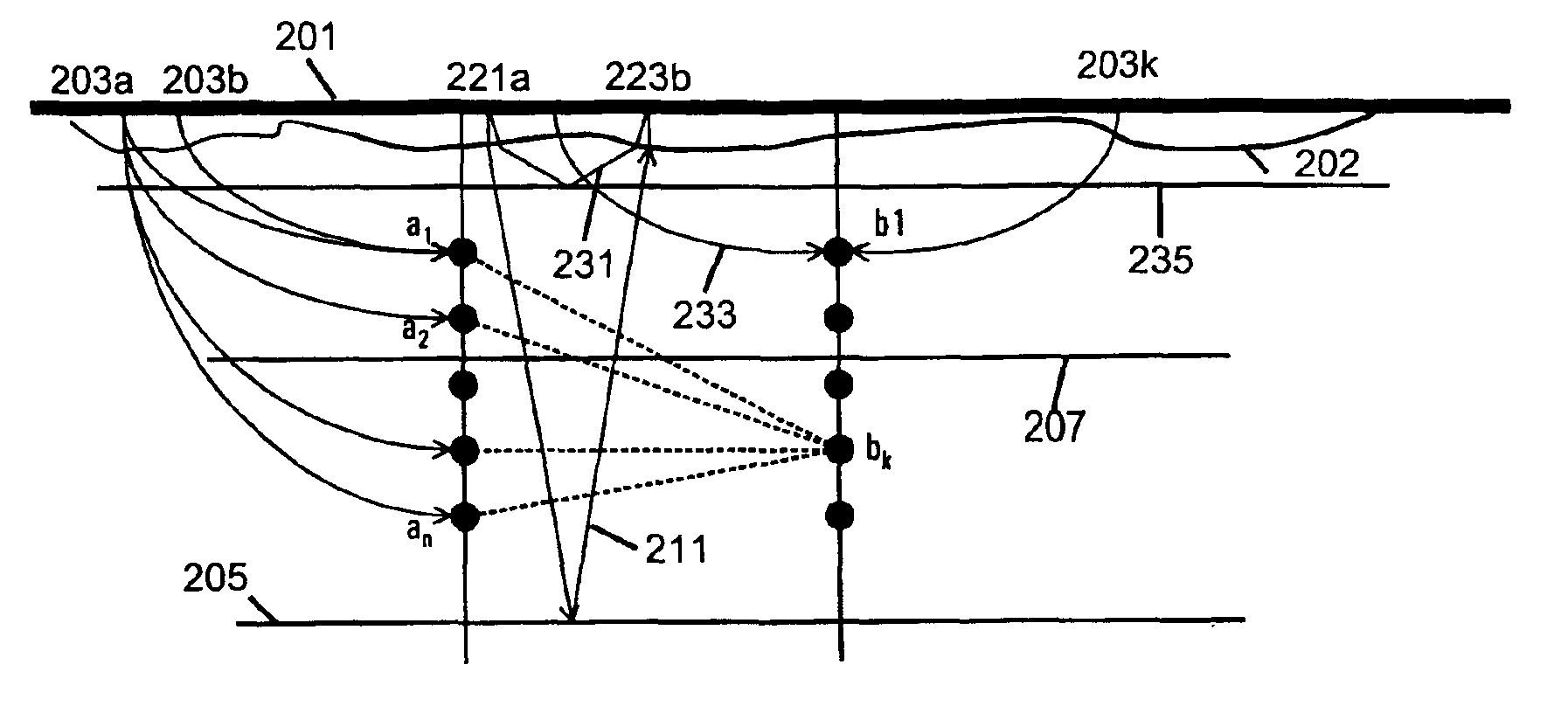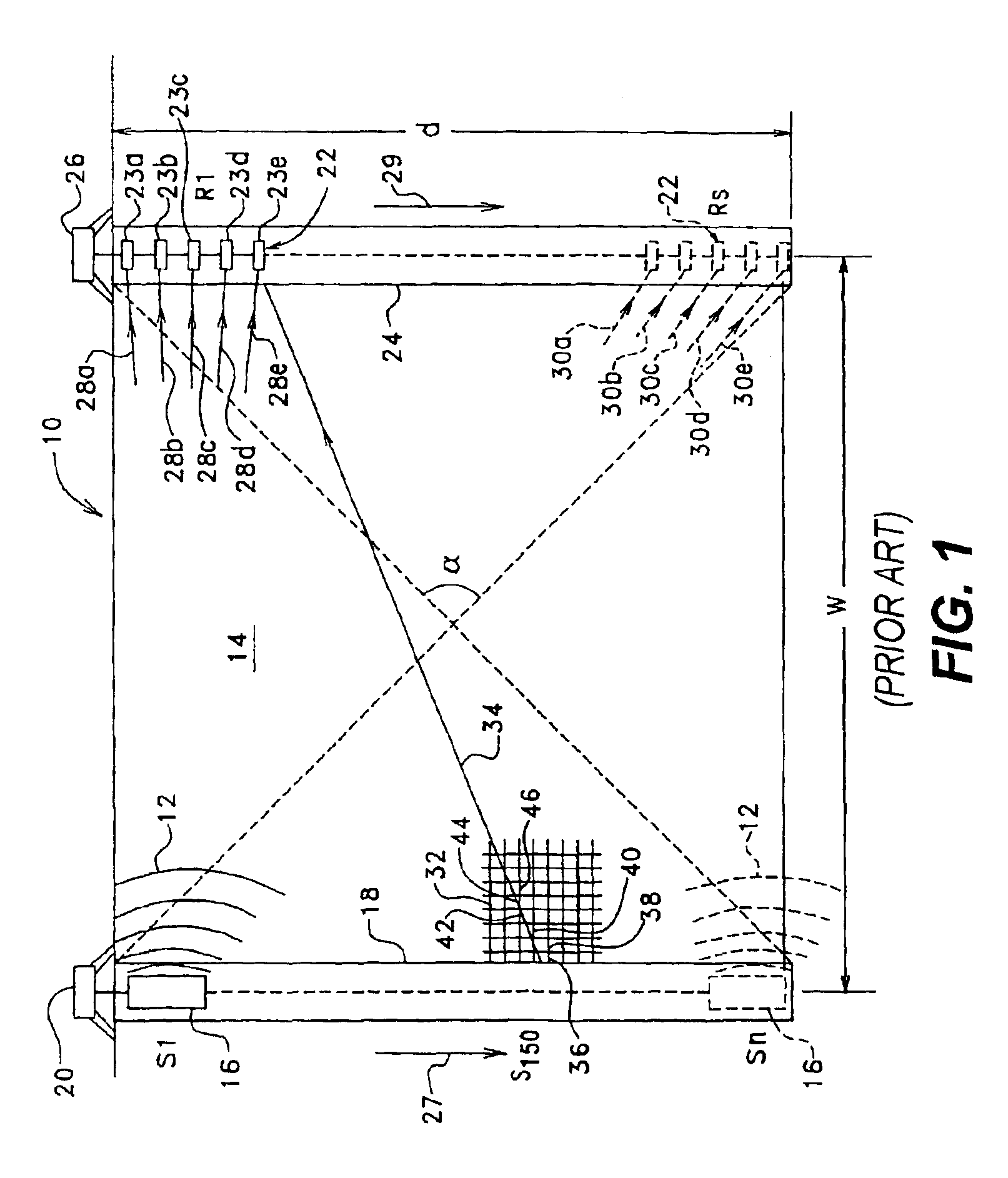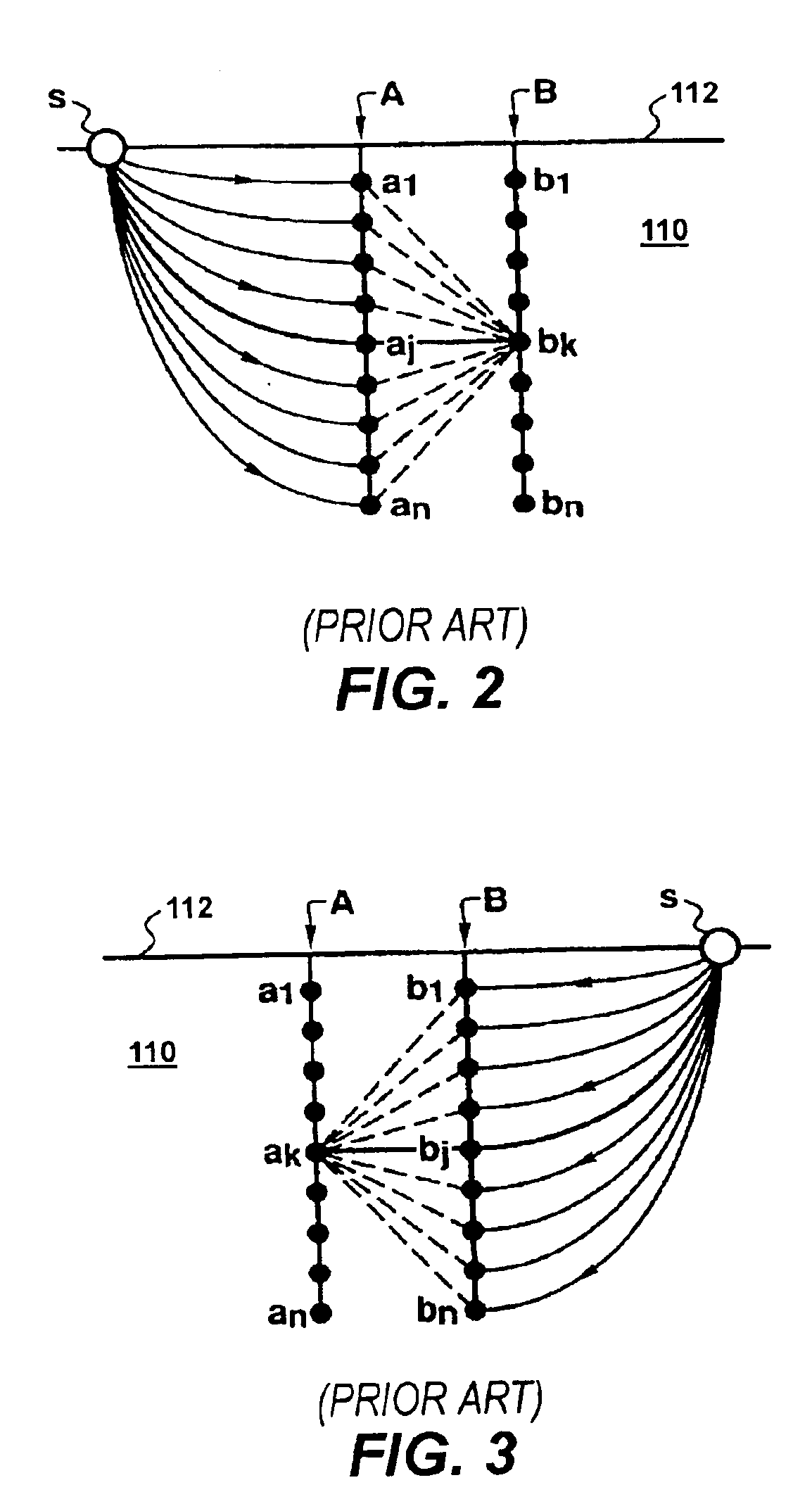Walkaway tomographic monitoring
a tomographic monitoring and walkaway technology, applied in the field of interpretation of reservoir monitoring, can solve the problems of higher power output, change in seismic velocity, and fluid pressure in the reservoir change,
- Summary
- Abstract
- Description
- Claims
- Application Information
AI Technical Summary
Problems solved by technology
Method used
Image
Examples
Embodiment Construction
[0020]The method of acquiring data for reservoir monitoring according to the present invention is schematically illustrated in FIG. 4. The data acquisition comprises three main features. As in Blakeslee, receivers a1 . . . an and b1 . . . bn are deployed in two wells. Only two wells are shown to simplify the illustration and in reality, more wells could be used. Using surface seismic sources, depicted by 203a, 203b . . . 203k, crosswell seismic data are simulated using the method described in Blakeslee. However, contrary to the teachings of Blakeslee, surface sources are also deployed between the two wells. This provides additional rays for tomographic reconstruction for the region between the two wells and addresses the problem of limited aperture with conventional or simulated crosswell tomography. An exemplary raypath for such a source between the two well locations is depicted by 233. Again, for simplifying the figure, only one raypath is shown from a single source to a single d...
PUM
 Login to View More
Login to View More Abstract
Description
Claims
Application Information
 Login to View More
Login to View More - R&D
- Intellectual Property
- Life Sciences
- Materials
- Tech Scout
- Unparalleled Data Quality
- Higher Quality Content
- 60% Fewer Hallucinations
Browse by: Latest US Patents, China's latest patents, Technical Efficacy Thesaurus, Application Domain, Technology Topic, Popular Technical Reports.
© 2025 PatSnap. All rights reserved.Legal|Privacy policy|Modern Slavery Act Transparency Statement|Sitemap|About US| Contact US: help@patsnap.com



